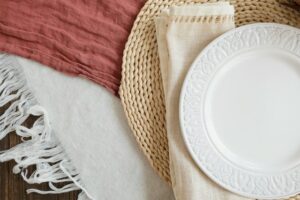The Eco-Friendly Credentials of Bamboo Tableware
Bamboo tableware is celebrated for its sustainability. Bamboo is a fast-growing, renewable resource that requires minimal water and no pesticides. Its cultivation has a significantly lower environmental impact compared to traditional wood sources.
Versatility and Functionality
Bamboo tableware offers a wide range of options, from plates and bowls to utensils and serving trays. Its durability and sturdiness make it suitable for various culinary uses, whether it’s a casual picnic or an elegant dinner party.
The Bamboo Production Process
The production of bamboo tableware involves harvesting mature bamboo stalks, which naturally replenish themselves. The stalks are then treated and processed to create durable, stylish, and functional tableware.
Aesthetic Appeal and Natural Charm
Bamboo tableware’s natural appearance adds a touch of rustic elegance to dining settings. Its earthy tones and textures complement a wide range of cuisines and table settings.
Biodegradability and Environmental Impact
Bamboo tableware is biodegradable, meaning it naturally decomposes without harming the environment. When disposed of, it returns to the earth as organic matter, leaving behind no long-lasting waste.
Why Choose Bamboo Tableware?
Reduced Environmental Footprint
By choosing bamboo tableware, you contribute to reducing deforestation and environmental degradation associated with traditional wood sources.
Biodegradability
Bamboo tableware ensures that your dining choices have a minimal impact on landfills and ecosystems.
Sustainability
Bamboo’s rapid growth and low resource requirements make it a sustainable choice for conscientious consumers.
Conclusion
Bamboo tableware epitomizes the essence of sustainable dining. Its eco-friendly credentials, versatility, aesthetic appeal, and minimal environmental impact make it a smart choice for those looking to align their culinary choices with their commitment to a greener planet. As we navigate the path towards a more sustainable future, bamboo tableware stands as a testament to the elegance of eco-conscious dining.






